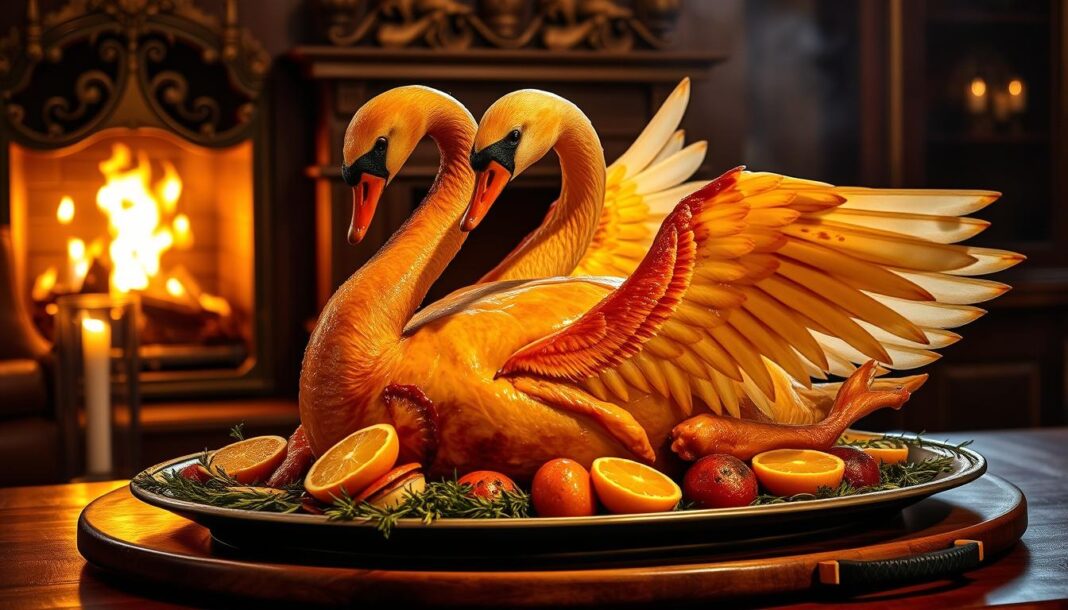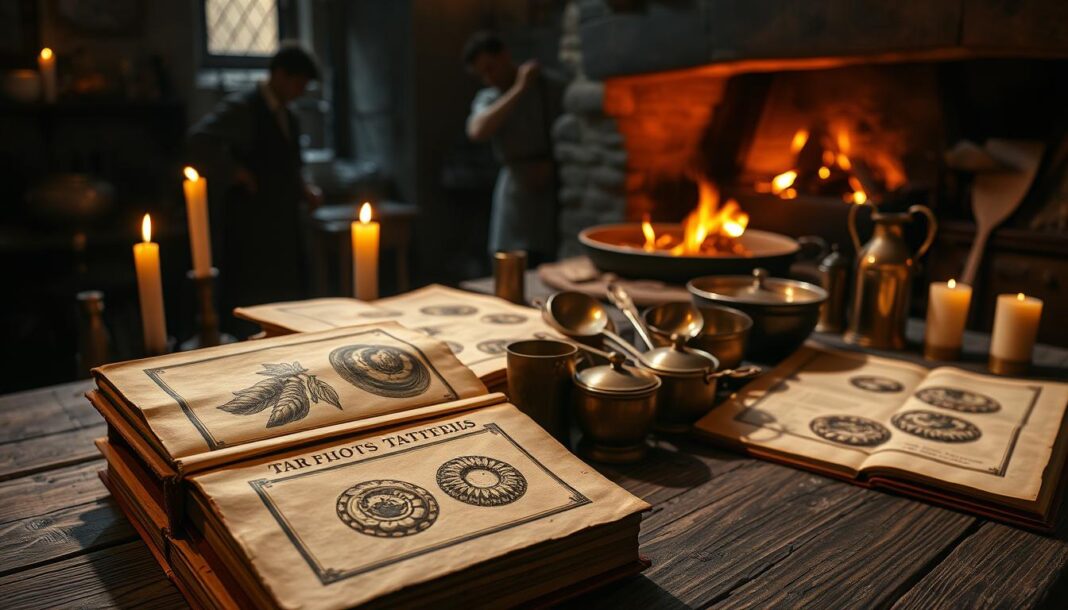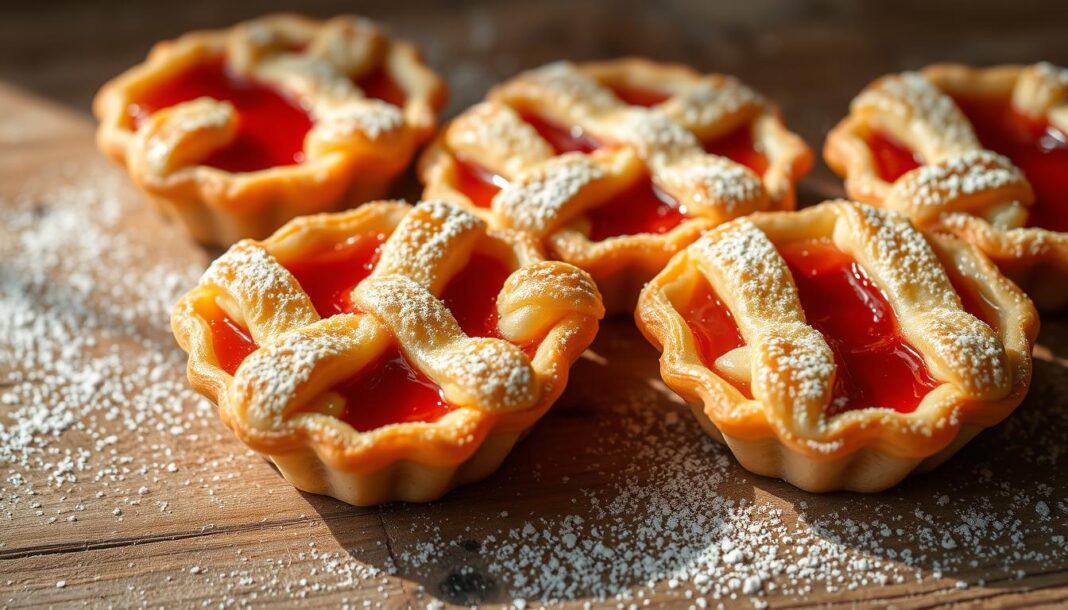The majestic swan, a symbol of nobility and luxury, has been a coveted dish throughout history. On August 25th, we commemorate the birthday of “Mad King Ludwig II” of Bavaria, also known as “The Swan King” for his adoration of this magnificent bird. Swan motifs adorn his castles, reflecting the bird’s significance in royal culture.
We explore the fascinating history of swan as a prestigious dish reserved for royalty and nobility across medieval Europe. This comprehensive guide takes you through the cultural significance of roasted swan, from its status as a royal delicacy to its preparation methods across different centuries. We’ll examine historical recipes and provide practical alternatives for modern cooks.
Key Takeaways
- Discover the historical significance of swan consumption in medieval Europe.
- Learn about the cultural importance of roasted swan as a royal delicacy.
- Explore authentic historical recipes for preparing swan.
- Find practical alternatives to swan for modern cooking.
- Understand the traditional techniques used in preparing roasted swan.
The Royal History of Swan Consumption
The history of swan consumption is a fascinating tale of status, luxury, and royal prerogative. For centuries, swans have been associated with royalty and nobility, particularly in European courts. The majestic appearance and graceful demeanor of swans made them a symbol of elegance and refinement.
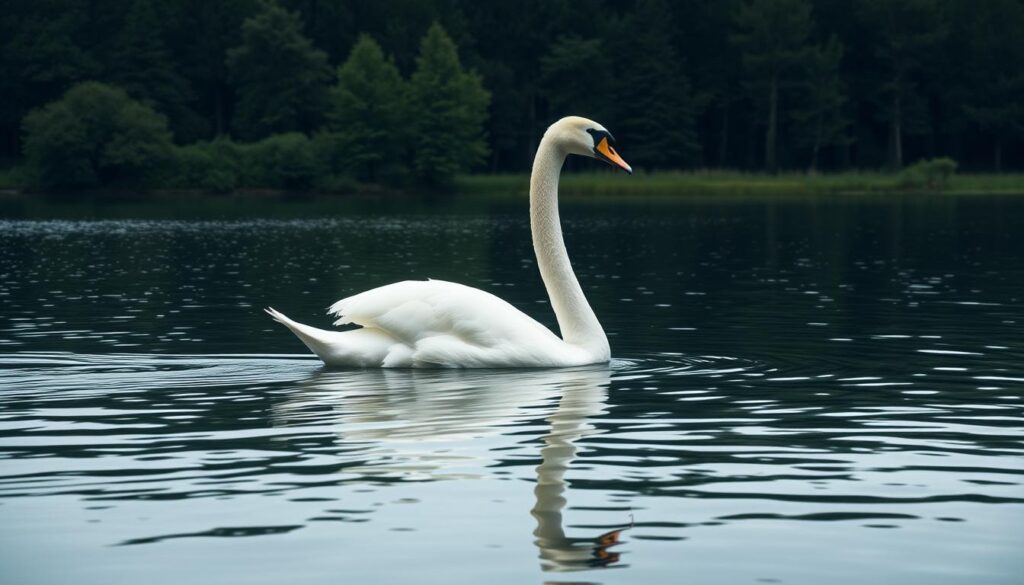
Swan as a Status Symbol in Medieval Courts
In medieval Europe, swans became a culinary symbol of wealth and nobility, strictly regulated by royal decree. Since the 12th century, all swans in England officially belonged to the monarch, making their appearance at a feast an immediate indicator of royal favor or nobility. The ceremonial significance of swans at medieval banquets was profound; they were often redressed in their feathers after cooking to create spectacular centerpiece displays.
The consumption of swan was not necessarily about enjoying its taste, described as “fishy mutton,” but about showcasing prestige and the ability to host an extravagant banquet. This practice underscored the bird’s status as a luxury food item, reserved for the elite.
The Swan King: Ludwig II of Bavaria
Ludwig II of Bavaria, famously known as “The Swan King,” had a profound affection for swans, which is evident in the swan motifs that adorn his castles. While it’s unlikely that Ludwig II ever consumed swan, his love for these birds symbolized his connection to the ideals of royalty and refinement that swans represented.
The story of Ludwig II and the symbolism of swans across different European courts highlight how these birds transcended their role as mere food to become powerful symbols of royalty and nobility. The attitudes toward swans and their consumption varied across courts and changed over the medieval and Renaissance periods, reflecting the complex and evolving relationship between luxury, power, and culinary practices.
Traditional Roasted Swan Recipes Through the Ages
As we explore traditional roasted swan recipes, we uncover the rich culinary heritage of medieval Europe. The preparation of swan for roasting involved meticulous steps, from initial cleaning to specialized roasting techniques that addressed the bird’s naturally dry meat.
14th Century English Preparation Methods
In the late 14th century, the “Le Menagier de Paris” provided detailed instructions on how to prepare swan for roasting. The process involved plucking, scalding, or boiling the bird before spitting and skewering it in four places. The swan was then roasted with its feet and beak intact, and the head left unplucked. To enhance the flavor, it was recommended to eat the swan with yellow pepper.
The practice of “reclothing” the cooked swan in its skin and feathers was also a notable aspect of medieval presentation. This involved splitting the bird between the shoulders, cutting it along the stomach, and then carefully removing the skin from the neck. The swan was then put on a spit, skewered, and gilded before being reclothed in its skin for presentation.
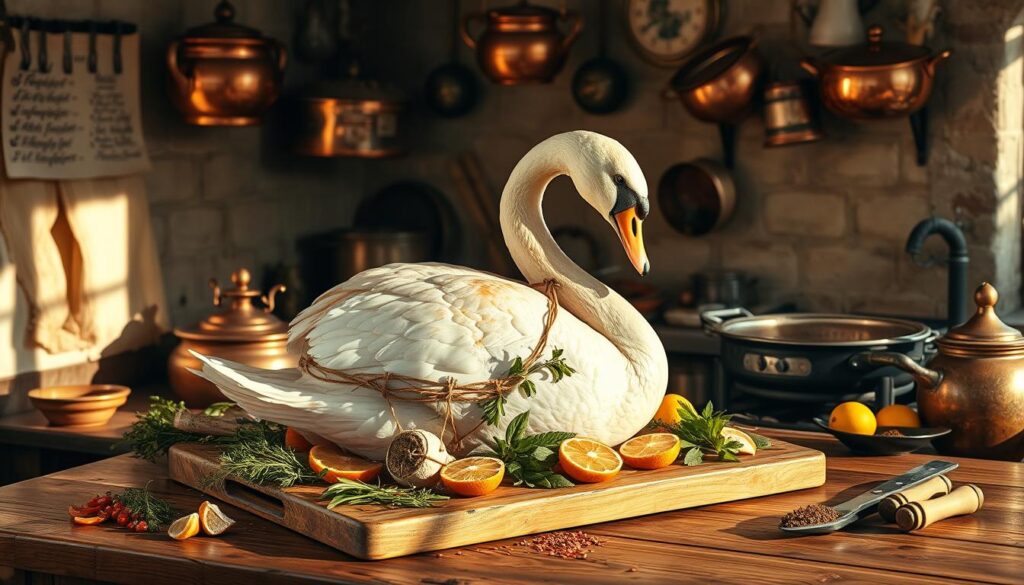
The Famous Chaudon Sauce
A traditional accompaniment to roasted swan was the Chaudon sauce, made from the swan’s giblets, bread, ginger, galingale, and blood, seasoned with salt and vinegar. This sauce was a crucial component of the dish, adding a rich and complex flavor profile to the roasted swan.
| Ingredient | Quantity | Preparation Method |
|---|---|---|
| Giblets | As needed | Chopped and cooked |
| Bread | 1 loaf | Torn into pieces |
| Ginger | To taste | Grate or chop |
| Galingale | To taste | Grate or chop |
| Blood | As needed | Used to thicken sauce |
| Salt | To taste | Seasoning |
| Vinegar | To taste | Seasoning |
Preparing and Cooking Roasted Swan
The art of roasting a swan, a dish steeped in history, requires careful consideration of modern alternatives and cooking techniques. While swans are now protected in most countries, we can still achieve an authentic historical dining experience by using suitable substitutes.
Selecting Your Bird: Modern Alternatives to Swan
When selecting a bird to roast, we recommend considering goose as the most authentic substitute due to its similar fat content and flavor profile to swan. Turkey is another viable option, offering a practical alternative due to its size and availability, although it’s not historically accurate for medieval recreations.
Using Goose or Turkey as Substitutes
Goose serves as an excellent substitute for swan due to its rich flavor and high fat content, making it ideal for roasting. Turkey, on the other hand, provides a larger size option, which can be beneficial for presentation purposes.
Ethical and Legal Considerations
It’s crucial to ensure that any bird you choose is sourced legally and ethically. Since swans are protected, we must opt for alternative birds that are legally available for consumption.
Preparation Steps
Preparing your bird involves several key steps to ensure a moist and flavorful outcome. First, cleaning and dressing the bird properly is essential. Next, creating a compound butter with herbs like parsley, sage, and thyme, mixed with salt and pepper, will provide an authentic seasoning. Finally, applying larding techniques or using a coat of olive oil will help maintain the bird’s moisture during roasting.
Cleaning and Dressing the Bird
Thoroughly clean and dress your chosen bird, removing any giblets and excess fat. This step is crucial for a clean and efficient roasting process.
Creating the Compound Butter and Seasoning
Mix softened butter with minced herbs, salt, and pepper to create a compound butter that will be rubbed under the bird’s skin and on its surface.
Larding Techniques for Moisture
For a more traditional approach, larding the bird with fat strips can help combat dryness. Alternatively, applying a generous coat of olive oil achieves a similar effect.
Roasting Method
Roasting your bird requires careful attention to temperature and timing. Start by roasting at a high temperature (425°F) before reducing it to 350°F to finish cooking. Regular basting is crucial to keep the bird moist.
Temperature and Timing Guidelines
Roast the bird at 425°F for the first 30 minutes, then reduce the temperature to 350°F. Cooking time will vary based on the bird’s weight, so it’s essential to monitor its progress.
Basting and Monitoring
Baste the bird regularly with its pan juices or melted butter to maintain moisture. Monitor the bird’s temperature and adjust cooking time as necessary.
Serving Your Historical Feast
The final step in recreating a medieval feast is presenting your roasted swan with flair and authenticity. To do this, you can re-dress the cooked swan in its plumage, a practice described in the late fourteenth-century “Le Menagier de Paris.”
For a traditional presentation, consider serving the bird with Chaudon sauce, a recipe for which was detailed in our earlier sections. Accompany the swan with root vegetables seasoned with salt and herbs, a common practice in medieval feasts. If using a goose as a substitute, the same principles apply.
To complete your historical feast, focus on period-appropriate table settings and serving vessels. This attention to detail will elevate your food presentation, making the experience even more memorable. By following these steps and using our recipe as a guide, you’ll create a truly immersive dining experience.
